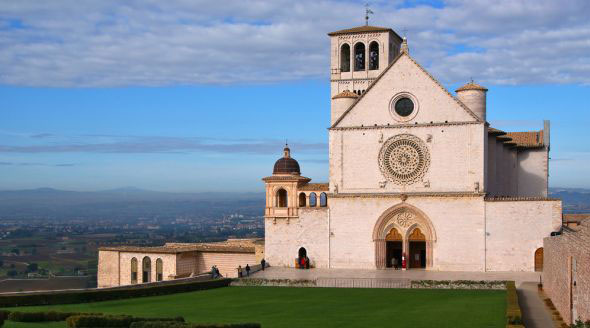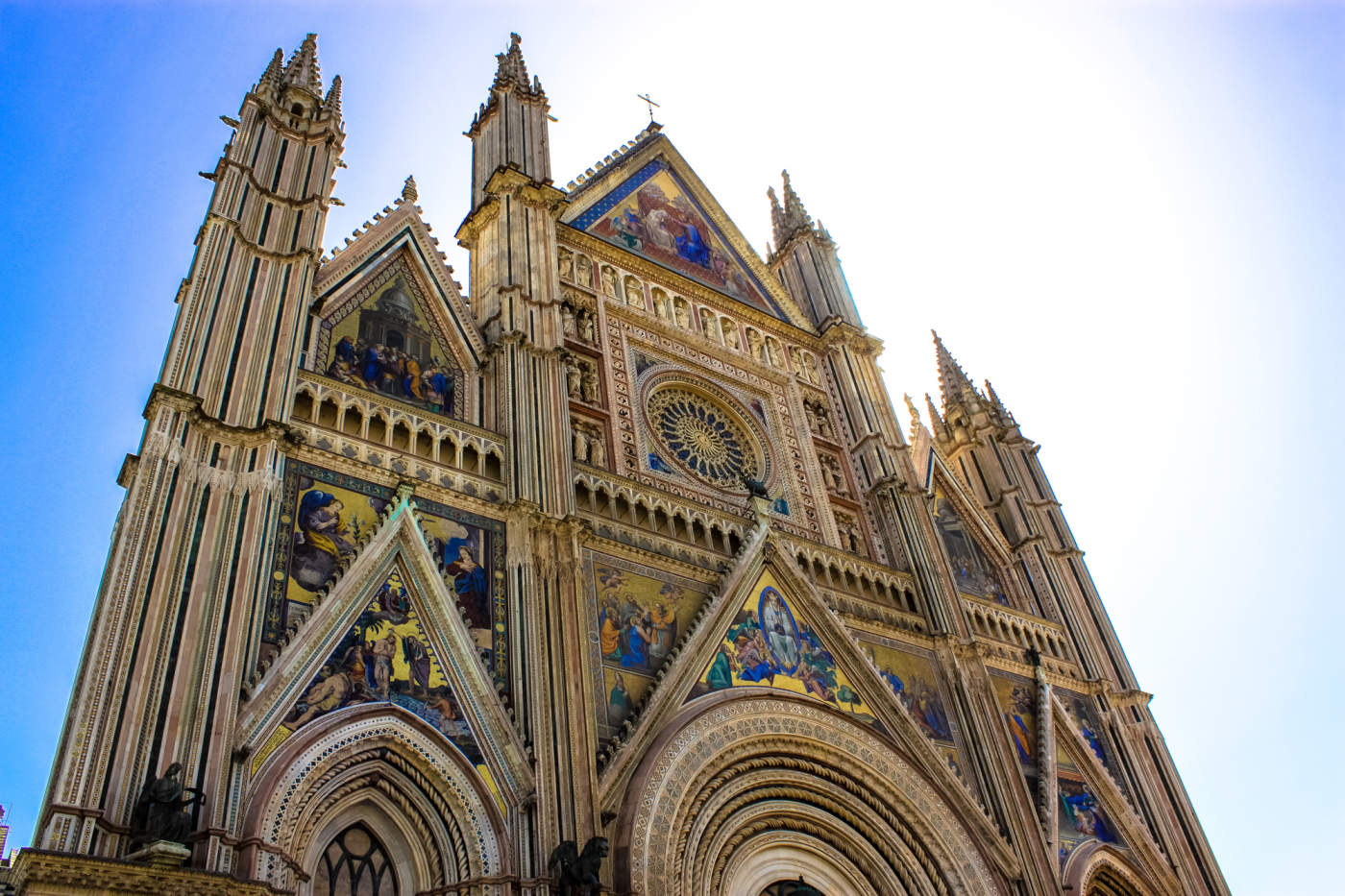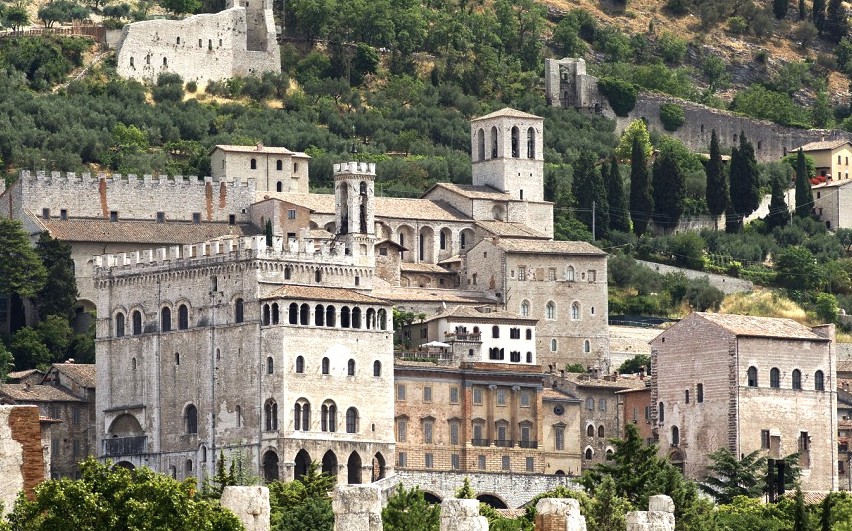
Travel program
1°day: PERUGIA
Arrival in hotel for check-in and lunch, followed by afternoon guided tour of Perugia.
Situated on a panoramic hill-top, its beautiful ancient and medieval monuments surprise all those who visit it.
Among these there is the Rocca Paolina, the fortress built by Paolo III Farnese, with its evocative underground roads winding their way between the ancient homes of the nobility and the Porta Marzia, the ancient Etruscan gateway into the south of the city.
The Fontana Maggiore is the work of Nicola and Giovanni Pisano and masterpiece of Gothic sculpture, dating back to 1278;
Palazzo dei Priori is an architectural jewel of great artistic and civic value and expression of the golden era of municipal development of Perugia;
Finally, a very well conserved monument definitely not to be missed is the Arco Etrusco, the monumental gateway to the city, dating back to the III century B.C.
Return to hotel for dinner and overnight stay.
2° day: ASSISI/SPOLETO
Strategically positioned overlooking the ancient Via Flaminia, Spoleto amazes the visitor with the splendor of its Romanesque churches and its Umbro-Roman remains.
Ponte delle Torri is the fourteenth century structure used both as aqueduct and walkway and admired by Goethe in his writings.
There is the Duomo, a masterpiece of Romanesque art with its extraordinary facade adorned with rose windows and a beautiful mosaic by Maestro Solsterno. The interior hosts a rare thirteenth century crucifix, the Renaissance masterpiece of Filippo Lippi, a cycle of frescoes in the apse, and the Eroli chapel frescoed by Pintoricchio.
The guided tour of the city also includes the Teatro Romano, still open to visitors and used for performances during the Spoleto Festival, the triumphal Arco di Druso and the church of Sant’Ansano where the visitor can find, one within another, an early Christian crypt with interesting frescoes from the XI-XII centuries, a Medieval church and a Roman temple.
Lunch in a restaurant in the historic centre
3° day: TODI/ORVIETO
Guided tour of Todi in the morning
This delightful town located on a hill-top in central Umbria offers a historic centre which is particularly well conserved and rich in history. This is the home town of Jacopone, the great mystic and poet as well as important figure in the history of the Franciscans. The Tempio della Consolazione, a magnificent Renaissance temple, designed by Bramante in the Greek-cross layout, is located below the city of Todi and constitutes the most significant expression of Renaissance architecture in Umbria. The vast and spacious church of San Fortunato is a rare and very beautiful example of the “hall church “ style of architecture and the remains of Jacopone are conserved in the crypt.
There is the square with its unique sense of balance provided by the three municipal buildings and the Duomo which reveals in its interior the unfolding of history throughout the centuries.
In the medieval area of the town there is a walk among the Etruscan- Roman remains, fountains and small churches, like the churches of Sant’Ilario and Santa Maria in Camuccia which contains a rare XII century wooden statue, and the Roman “Nicchioni” , an impressive monumental structure which is part of the Roman complex.
Lunch in a restaurant
Guided tour of Orvieto in the afternoon
The city is located on top of a tuff cliff and can be reached by cable railway. Founded in the Etruscan era, it offers unequalled artistic treasures.
The Duomo is an absolute masterpiece of Italian art and the perfect union of Italian Medieval architecture, sculpture and painting. Not to be missed is the mosaic embellished facade, the goldsmith’s art of the Reliquiario del Corporale and the San Brizio chapel with its extraordinary frescoes of the Day of Judgment by Luca Signorelli.
The Palazzo del Popolo is an original example of a thirteenth century civic building, set in the Medieval heart of the city. A walk in this Medieval area reveals churches and buildings constructed in the glowing tuff stone. Not to miss are the churches of San Giovenale , San Giovanni and San Domenico, which contains the marble sarcophagus which was beautifully sculpted by Arnolfo di Cambio. There is also the Pozzo di San Patrizio, a well with 248 spiral steps dug into the rock to reach water in the event of attack, which was the brilliant work of the papal architect Sangallo,
Return to hotel for dinner and overnight stay
4° day: GUBBIO
Breakfast in hotel
Guided tour of Gubbio in the morning
The city of the wild and evocative ‘Corsa dei Ceri’ offers a wonderfully preserved medieval town centre.
The elevated square, held up by enormous arches, the two public buildings and Palazzo dei Consoli represent the real hub of the city and the true symbol of the municipal history of Gubbio.
Palazzo dei Consoli, today the seat of the Museo Civico, is a superb example of fourteenth century civic architecture and constitutes one of the most majestic buildings from the Medieval era.
The church of San Francesco, with its fifteenth century frescoes, was built on the place where the Saint of Assisi first donned the Fransiscan habit.
The Duomo is located in the Quartiere San Martino. The oldest and most intimate aspects of Gubbio can be found in these narrow streets and in the views from the medieval quarter along the banks of the Camignano.
Lunch in a restaurant in the historical centre
For a customized quote and futher information please contact us




